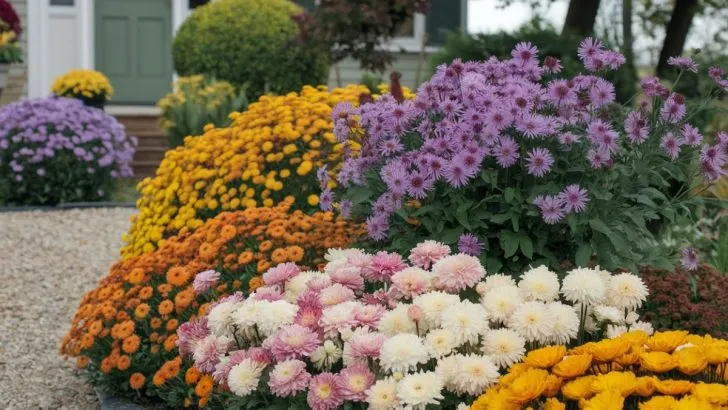Who says your front yard can’t be bursting with color as the leaves begin to fall?
While many gardeners focus on spring and summer blooms, fall offers a golden opportunity to make your home stand out with vibrant flowers that keep your garden lively when others have started to fade.
Imagine your walkway framed with shades of deep purples, fiery reds, and sunny yellows—talk about making a statement!
Selecting the right fall-blooming flowers isn’t just about picking the prettiest petals; it’s about creating a harmonious display that carries your landscape seamlessly into the cooler months.
By choosing varieties with extended and overlapping bloom times, you can ensure that your garden stays dazzling throughout autumn.
Whether you’re dealing with a small front yard or an expansive lawn, incorporating flowers that shine in the fall can be one of the best landscaping decisions you make.
Below are eight fantastic fall-blooming flowers that will add a splash of color and charm to your front yard, ensuring it remains the talk of the neighborhood throughout the season.
1. Chrysanthemum (The Hardy Mum)
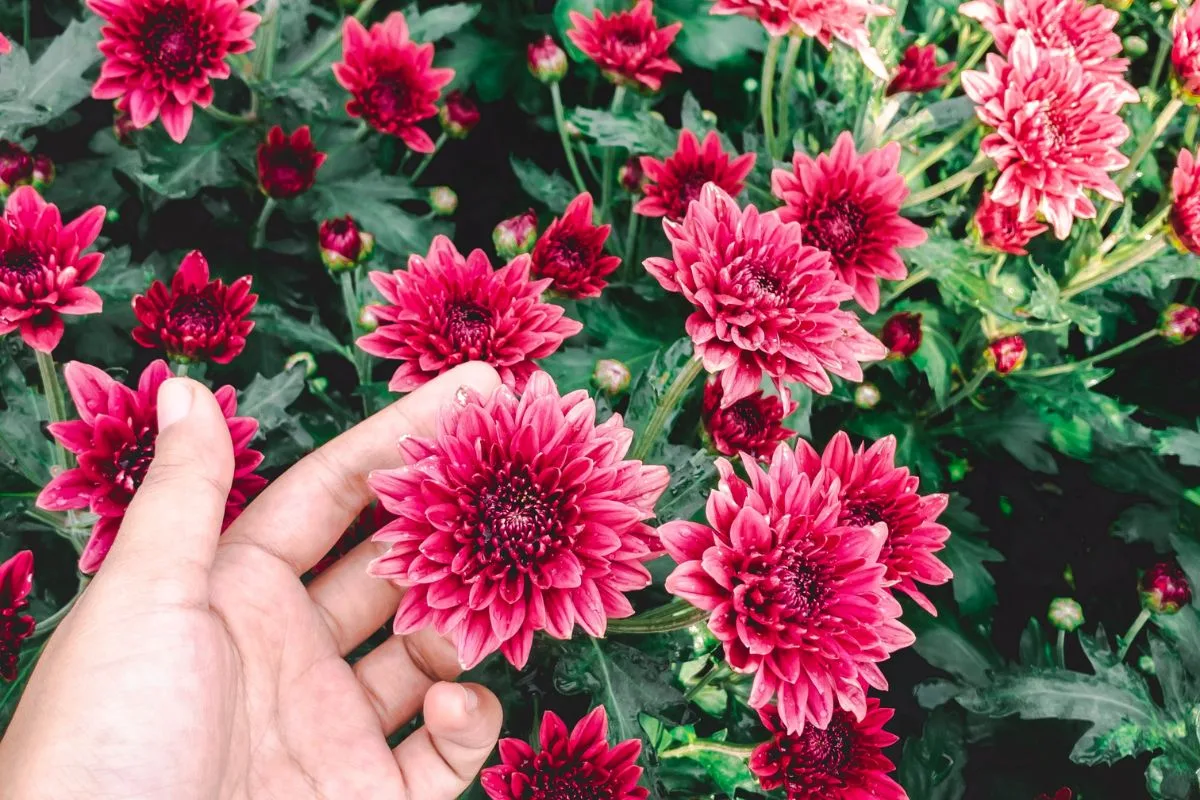
When it comes to fall favorites, chrysanthemums—or simply “mums” to gardening aficionados—are the undisputed champions of autumn color.
These perennial powerhouses burst into bloom just as many other flowers are winding down, offering a spectacular array of hues ranging from deep burgundy and fiery orange to sunshine yellow and crisp white. It’s no wonder they’re a go-to for doorstep décor and festive displays during the fall season.
But did you know that with a little planning, you can enjoy mums year after year? While many treat them as annuals—planting them in pots for a seasonal splash and letting them go after the frost—garden mums are actually perennials that, if planted early enough, can establish themselves and return each fall.
The trick is to get them into the ground promptly, ideally in the spring or at the latest, early fall, to give their roots time to settle in before winter arrives.
Mums thrive in full sun to partial shade and prefer well-drained soil that stays consistently moist (but not waterlogged).
2. New England Aster
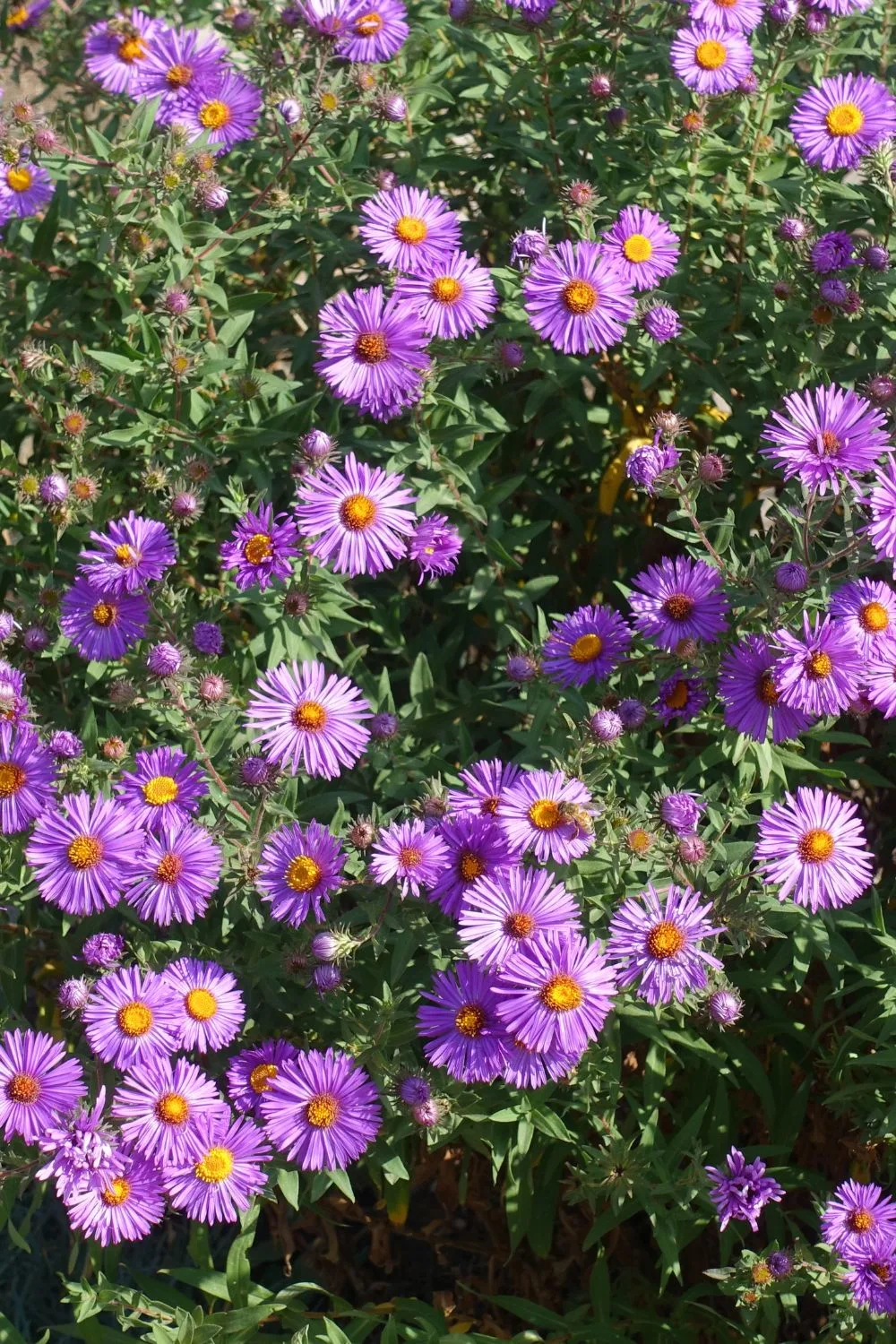
Looking to add a touch of wild beauty to your front yard? Meet the New England aster (Symphyotrichum novae-angliae), a native perennial that brings an explosion of color just when your garden might need it most.
Hardy in USDA zones 4 through 8, these asters are the garden’s equivalent of a grand finale in a fireworks display, showcasing vivid shades of purple, pink, blue, and white with cheerful yellow centers.
One of the best things about New England asters is their timing. They bloom in late summer to fall, bridging the gap between the lushness of summer and the quiet of winter.
Planting them alongside your summer-blooming perennials ensures that as one show’s closing curtains, another is just beginning. Plus, their daisy-like flowers are not only stunning to look at but also attract butterflies and other pollinators, adding life and movement to your garden.
These asters prefer full sun but can tolerate partial shade, and they thrive in moist, well-drained soil. During the hottest days of summer, they might look a bit weary, but don’t be fooled!
With regular watering, they’ll persevere and reward you with a spectacular autumn display. For an even more eye-catching effect, consider planting different varieties to create a mosaic of colors that will have your neighbors stopping in their tracks.
3. Perennial Sunflower
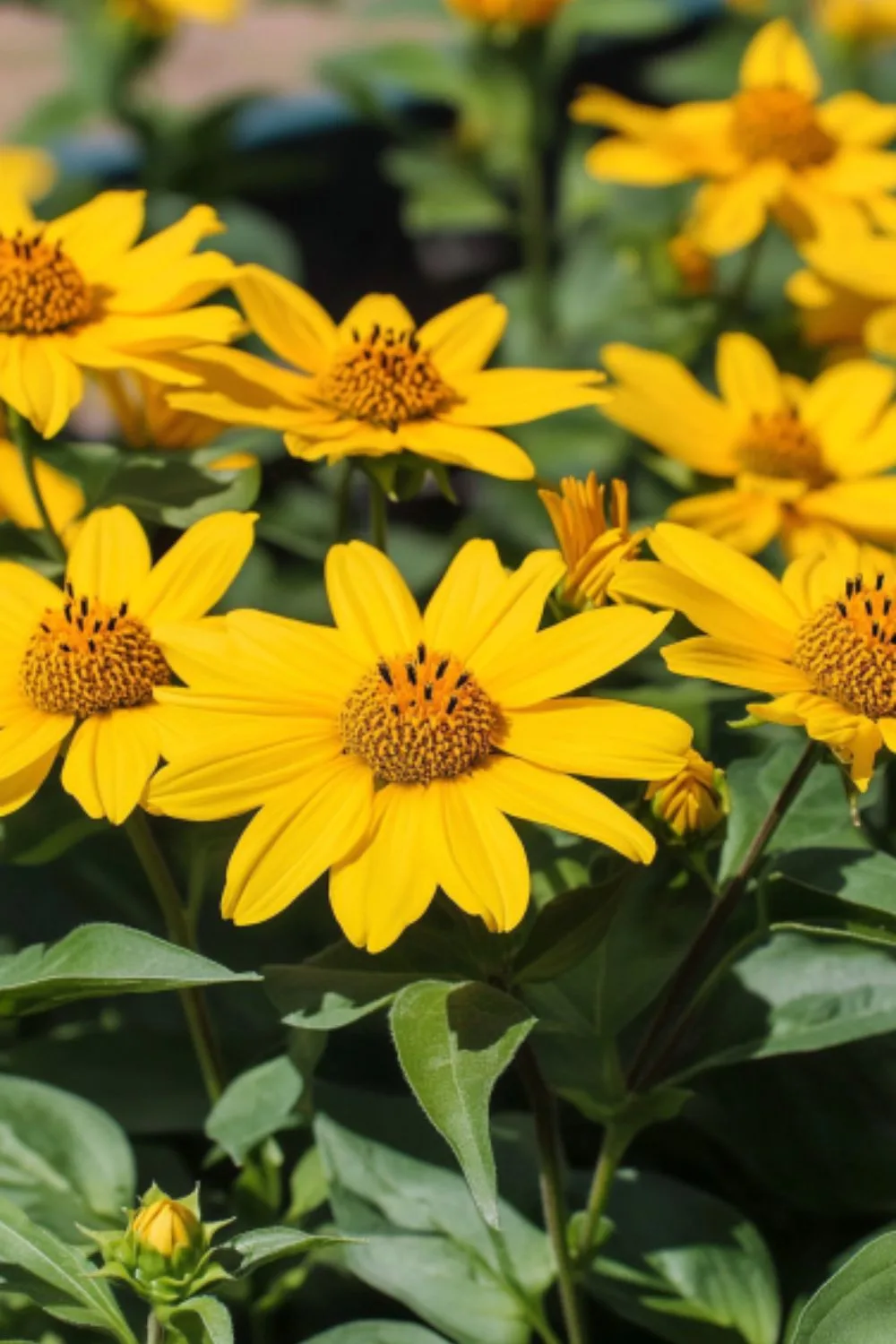
When you think of sunflowers, you probably picture towering stalks with giant blooms reaching for the sky. But guess what? There’s more to sunflowers than meets the eye—or the height chart!
Perennial sunflowers offer all the sunny charm of their annual cousins but in more compact sizes that are perfect for front yard planting.
Species like Helianthus debilis (beach sunflower), Helianthus mollis (ashy sunflower), and Helianthus occidentalis (western sunflower) grow to a modest one to four feet tall, making them ideal candidates for borders and beds without overshadowing your other plants.
These perennial varieties bring the same cheerful yellow petals and dark centers that sunflowers are famous for, but with smaller blooms that pack a delightful punch.
They’re like the sun’s own ambassadors, spreading warmth in your garden well into fall. Another bonus? Perennial sunflowers are hardy across various climate zones.
For instance, the beach sunflower thrives in zones 8 through 11—perfect for warmer regions—while the ashy and western sunflowers can tough it out in colder zones down to zone 3.
Perennial sunflowers are sun-loving plants (no surprise there!), so plant them in a spot that gets plenty of rays.
They aren’t too fussy about soil, as long as it drains well, and once established, they can handle periods of drought—making them a low-maintenance option for busy gardeners.
Incorporate these golden beauties into your front yard, and you’ll have a timeless symbol of joy greeting you and your guests every day.
4. Blanket Flower
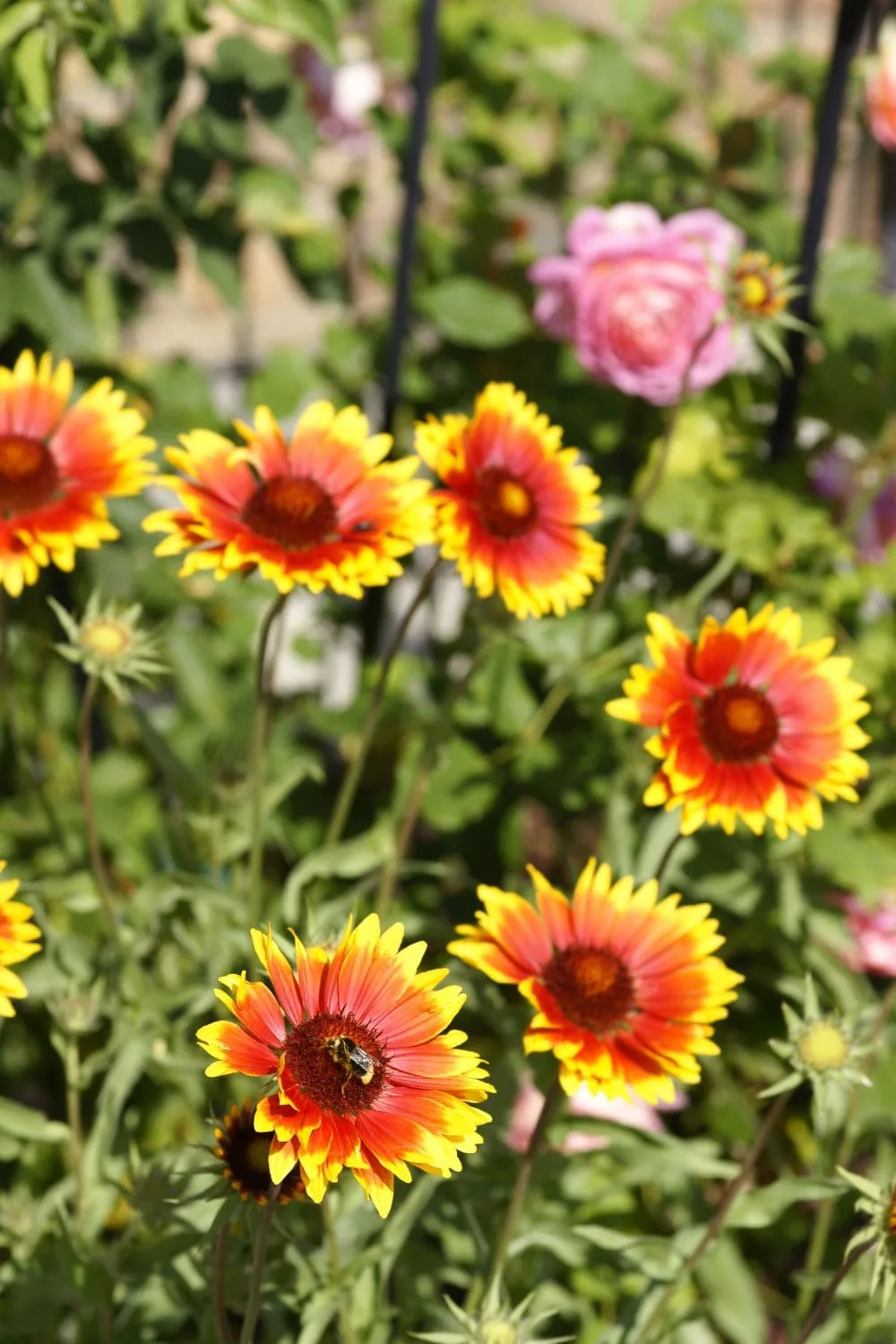
Ever wished for a flower that blooms so abundantly it could practically wrap your garden in color? Enter the blanket flower (Gaillardia spp.), aptly named for its profusion of daisy-like blossoms that seem to spread over the landscape like a cozy, vibrant quilt.
These hardy perennials, reaching heights of two to three feet, are real workhorses in the garden, delivering color from summer straight through fall.
One of the standout features of blanket flowers is their incredible hardiness—they’re happy in zones 3 through 10, which covers just about every climate short of the most extreme.
They’re sun worshippers, thriving in full sunlight, and are remarkably tolerant of poor soils, provided there’s good drainage. This makes them an excellent choice for those tricky spots where other plants might struggle.
The blossoms themselves are a feast for the eyes, often featuring concentric rings of reds, oranges, yellows, pinks, and purples. They’re like nature’s own fireworks display!
With their compact, mounding growth habit, blanket flowers make fantastic border plants and are equally stunning when mass-planted for a swath of continuous color. Plus, they attract butterflies and other pollinators, adding an extra layer of life to your front yard.
5. Pansy
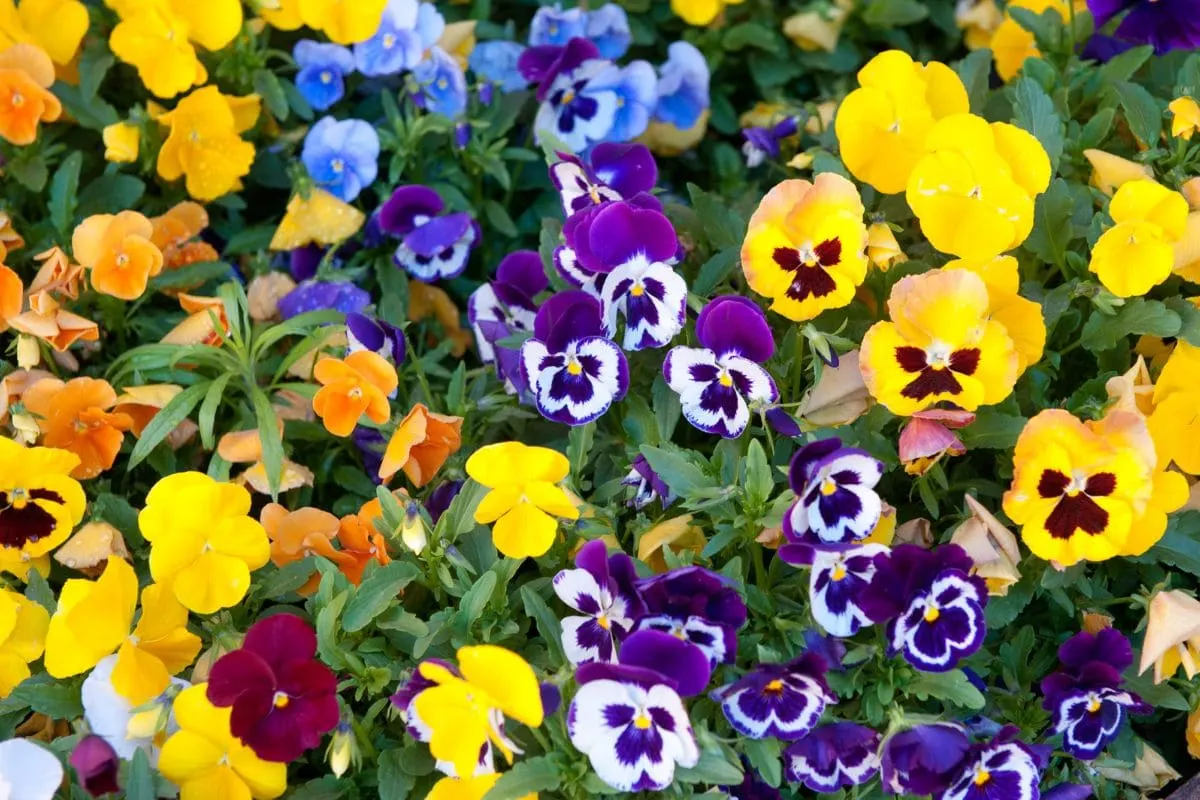
Don’t let their delicate appearance fool you—pansies are tough little characters that bring a touch of whimsy to any garden. With their charming “faces” and a virtually endless array of color combinations, pansies (Viola x wittrockiana) are a delightful addition to the fall garden.
While they can be grown as perennials in milder climates (hardy in zones 6 and above), they are often treated as annuals in cooler regions, making them perfect for adding a splash of color during the shoulder seasons when temperatures are just right.
Pansies flourish when the weather is cool, so planting them in late summer or early fall sets the stage for a vibrant display as autumn unfolds. They stay relatively petite, reaching only four to eight inches in height, which makes them ideal for borders, edging pathways, or filling in gaps among taller plants.
Their compact size doesn’t detract from their impact, though—their bright, velvety petals can light up a garden like little beacons.
6. Snapdragon
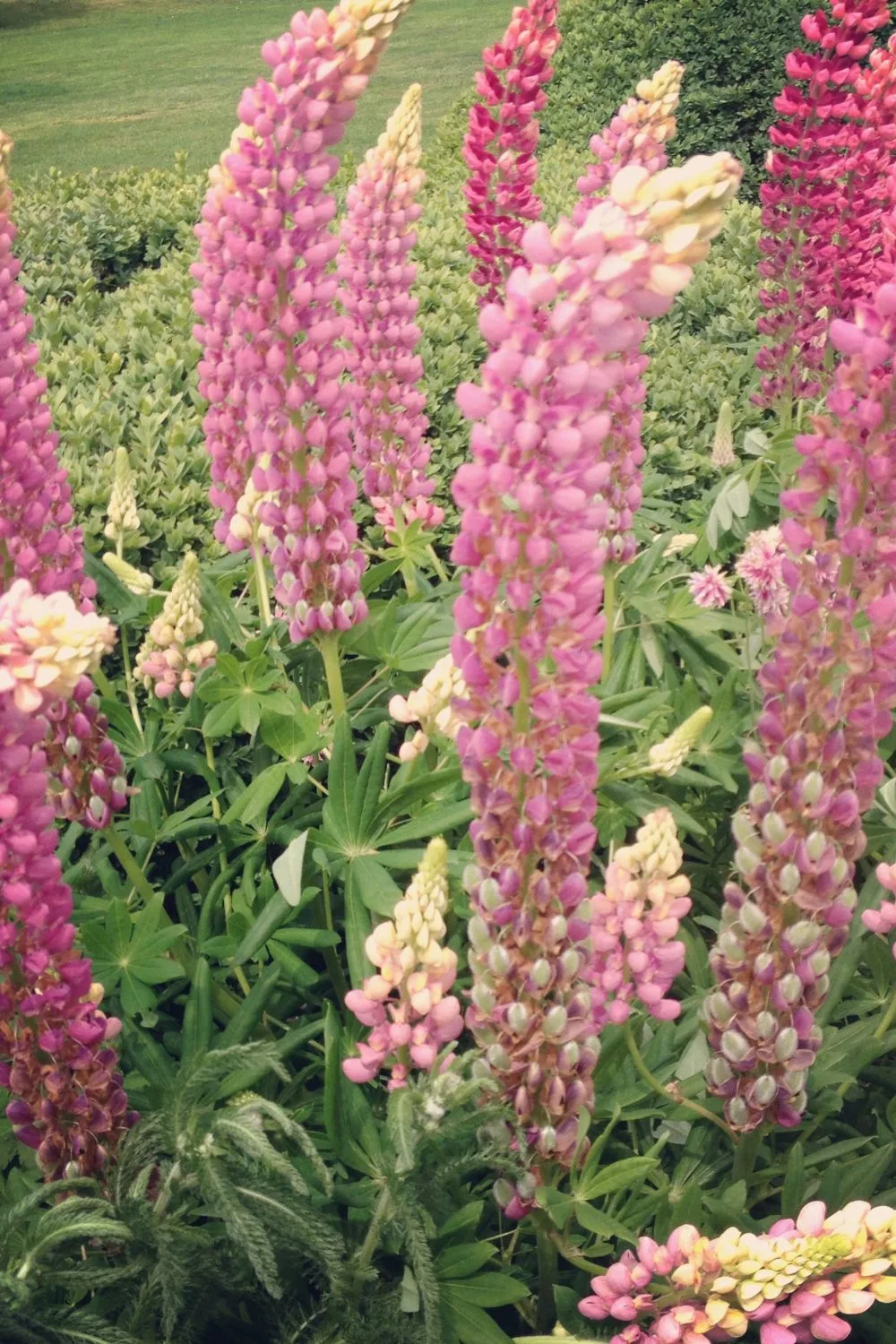
Add a touch of whimsy and vertical interest to your fall garden with snapdragons (Antirrhinum majus).
These enchanting plants get their name from the unique shape of their blooms, which resemble tiny dragon heads that “snap” open and shut when squeezed—a delightful feature that never fails to fascinate children and adults alike.
In warmer climates (zones 7 through 11), snapdragons are perennials, but they’re often grown as annuals in cooler regions, shining brightest during the cooler temperatures of spring and fall.
Growing snapdragons is relatively straightforward. They prefer full sun to partial shade and thrive in moist, well-drained soil.
While you can start them from seed—keeping in mind they need a good two to three months from planting to bloom—many gardeners opt for nursery-grown transplants for instant impact.
With their spiky blooms and rich colors, snapdragons can bring a fairytale quality to your front yard, enchanting all who pass by.
7. Marigold
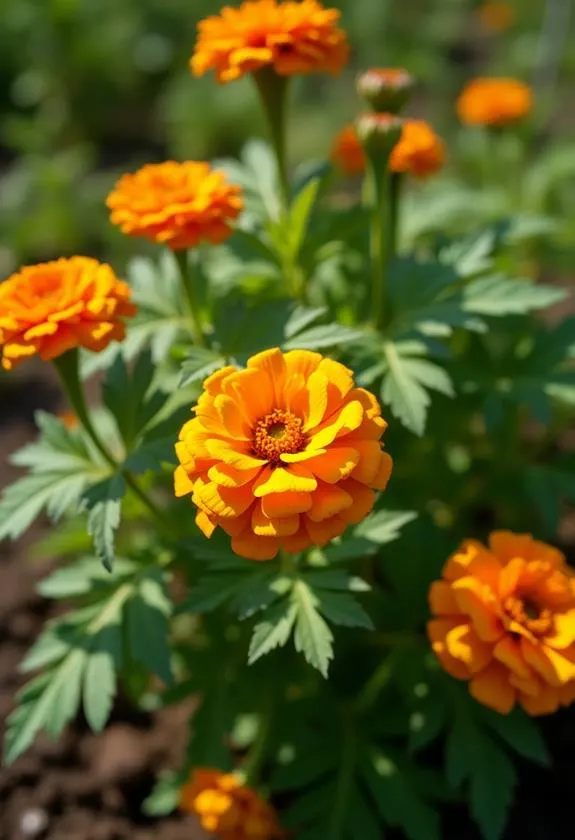
When it comes to classic garden staples, marigolds (Tagetes spp.) undoubtedly top the list. These sun-loving annuals are like the reliable friends of the garden world—easy to grow, cheerful, and always up for brightening your day.
With blooms that range from sunny yellows to deep oranges and rich reds, marigolds are the very embodiment of autumnal hues, making them a perfect choice for fall planting.
One of the standout qualities of marigolds is their tenacity. They bloom from summer straight through to the first hard frost, often outlasting many other annuals.
Their resilience makes them ideal for gardeners seeking continuous color without the hassle of high maintenance. Regular pinching and deadheading can encourage bushier growth and an even more abundant display of flowers.
Marigolds are incredibly versatile, suitable for beds, borders, containers—you name it. They thrive in full sun and prefer moist, well-drained soil, but they’re quite forgiving and can handle less-than-ideal conditions with grace.
Beyond their aesthetic appeal, marigolds are also known for their pest-repelling properties, making them a functional addition to your front yard. Plant marigolds, and you’ll not only enhance your curb appeal but also give yourself a pat on the back for smart gardening.
8. Black-Eyed Susan
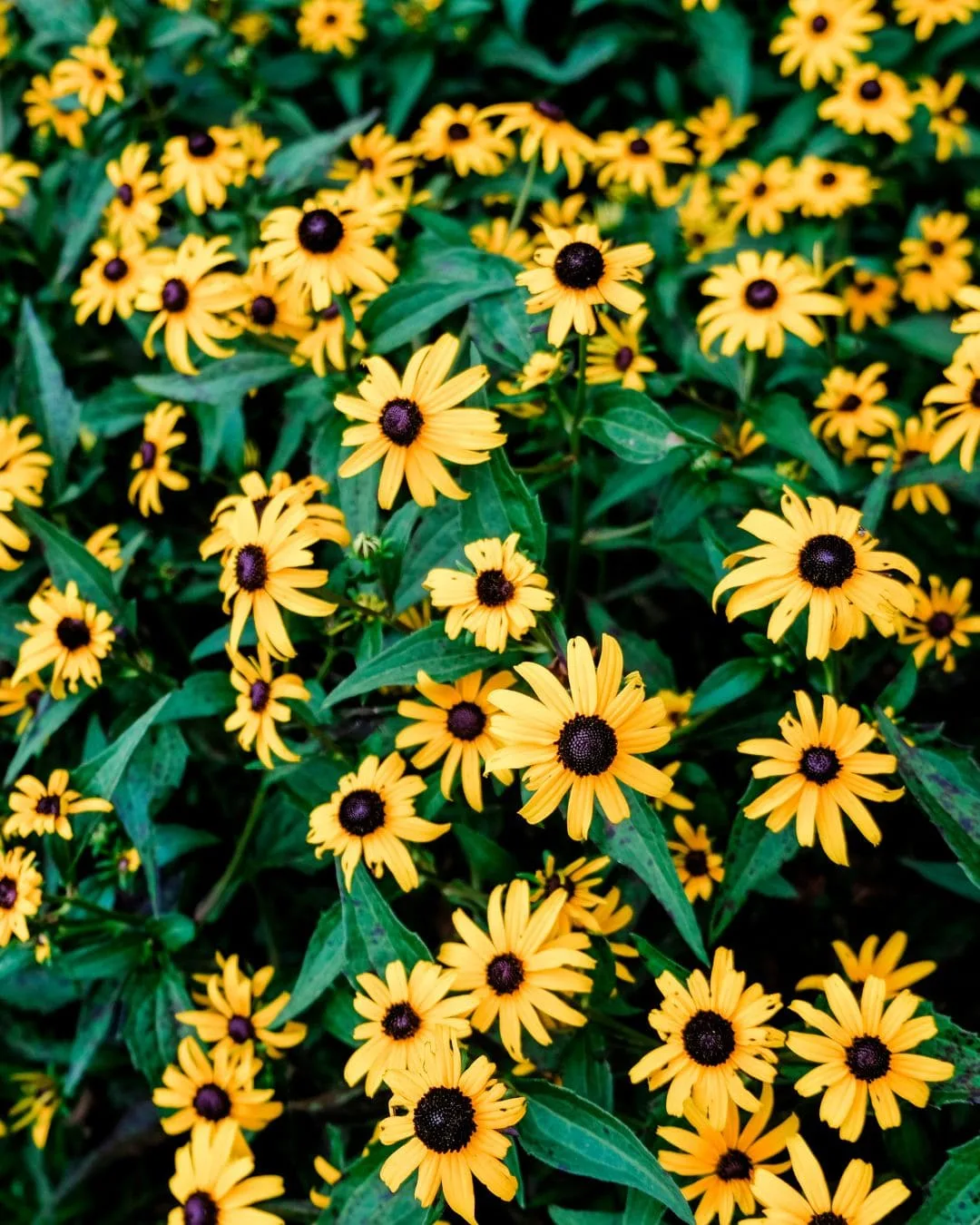
Meet the black-eyed Susan (Rudbeckia hirta), the quintessential fall flower that’s like a burst of sunshine captured in petal form. Traditionally celebrated for their bright yellow, daisy-like blooms with striking dark centers, black-eyed Susans bring a cheerful and rustic charm to any garden.
If you’re looking to turn heads, consider varieties like ‘Sahara’, ‘Summerdaisy Cherry’, or ‘Enchanted Flame’.
These unique cultivars take the familiar black-eyed Susan to new aesthetic heights, offering rich tones that complement the fall landscape beautifully.
Plant them en masse for a dramatic effect, or intermix them with other perennials for a tapestry of color and texture.
Hardy in USDA zones 3 through 9, black-eyed Susans are as tough as they are lovely. They thrive in a range of soil types, with a preference for neutral pH, and are happiest in full sun to light shade.
One of their best qualities is their low-maintenance nature—once established, they require minimal care. They’re also easy to grow from seed, making them an economical choice for gardeners looking to maximize impact without breaking the bank.
With few pest problems and a knack for attracting butterflies and bees, black-eyed Susans are a win-win for both you and your garden’s ecosystem.

